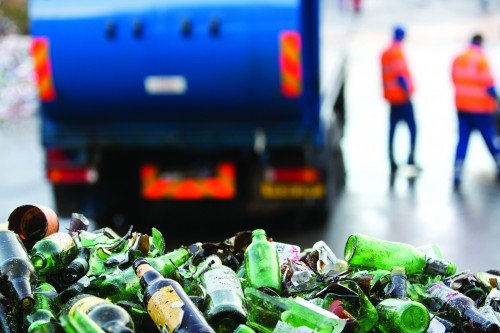A circular economy would help resolve future resource scarcity and security issues but presents new occupational health and safety challenges. David Palmer-Jones reports.
 Historically, waste management meant little more than burying waste in landfill. However, over the past decade in particular, dramatic changes have been made to the way we view and treat this material – as a resource rather than waste.
Historically, waste management meant little more than burying waste in landfill. However, over the past decade in particular, dramatic changes have been made to the way we view and treat this material – as a resource rather than waste.
Because this resource is precious, those involved in the recycling and resource management sector, among many others, are working to deliver a new ‘circular economy’, which will replace the traditional linear process of make, use and dispose.
The idea behind this philosophy is to
keep resources in use for as long as possible, to extract the maximum value from them while they are in use and to then recover and regenerate products and materials at the end of their service life – through recycling and reprocessing or producing energy from materials that cannot be viably recycled.
A circular economy will not only help to reduce waste, but also help to resolve resource scarcity/security issues in the future; deliver a more competitive UK economy; and drive greater resource productivity.
Without the ability to return materials and energy back to manufacturers, there will be no circular economy, so organisations within our sector have made significant changes to their business models, practices and infrastructure in order to facilitate this.
As we move away from landfill, we have invested in new facilities such as energy from waste (EfW) plants, which produce heat and power from non-recycled waste; materials recycling facilities (MRFs) to separate and sort recyclable material; anaerobic digestion plants, which produce fuel and fertiliser from decaying organic matter and a whole host of technology designed to extract the maximum resource value from various waste streams.
However, this technology presents new occupational health and safety challenges for an industry that has a less than satisfactory track record in this area.
Building a circular economy is labour-intensive and for every previous job on a landfill under the linear model, a circular model will create five jobs in new roles and facilities.
As a result of this, our industry is seeing a rapid expansion of personnel operating in closer quarters – often with a more ‘hands-on’ approach to sorting and segregating materials alongside heavy machinery that must be treated with respect.
The injury rate for the sector is unfortunately still much higher than the agriculture and construction sectors,
which tend to provide a benchmark for us, although there has been a small but positive overall downward trend in injuries to waste and recycling workers over the last few years.
However, this modest progression is
not enough for our industry to rest on its laurels and we must continue to strive for improvement, because one fatality or serious injury is one too many.
The Environmental Services Association (ESA), which represents members of the recycling and waste management industry in the UK, launched an Accident Reduction Charter a decade ago and, in that time, ESA members have reduced accidents by 65 per cent – albeit from a modest base.
In July this year, the ESA board reaffirmed
its commitment to the charter by signing up to a set of targets that aim to reduce the incidence rate of serious accidents (which result in an absence from work of more than three days) by a minimum of 10 per cent year on year until 2018 – with a clear and ultimate ambition of achieving ‘zero harm’ to the people working in the sector.
The ESA also supports the Waste Industry Safety & Health (WISH) Forum, which is run with the partnership and involvement of HSE, in delivering its five strategic goals to: provide strong leadership; involve the workforce; build competence; create healthier, safer workplaces; and help SMEs.
While reducing the number of accidents in our industry undoubtedly requires the type of strong leadership demonstrated
by the ESA and WISH, it also requires both training and behavioural change among those at the sharp end of our services, particularly as we move into new industrial processes to support the circular economy.
David Palmer-Jones is CEO of SITA UK and chairman of the Environmental Services Association
The Safety Conversation Podcast: Listen now!
The Safety Conversation with SHP (previously the Safety and Health Podcast) aims to bring you the latest news, insights and legislation updates in the form of interviews, discussions and panel debates from leading figures within the profession.
Find us on Apple Podcasts, Spotify and Google Podcasts, subscribe and join the conversation today!


